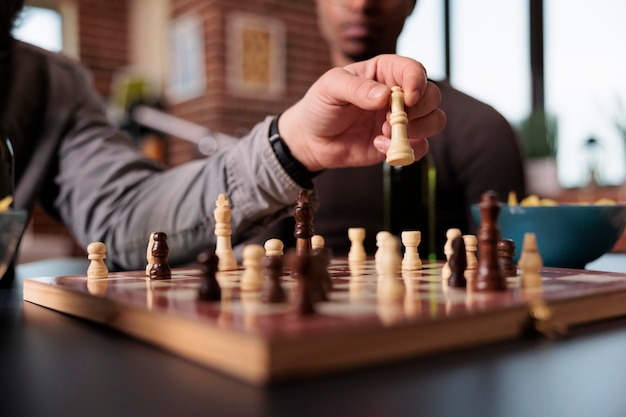🪜ASL Level 2, Activity 10-Question Board Game (Online)
Description:
Students will participate in fingerspelling practice and signing questions in ASL grammar as well as being able to answer them thoughtfully and clearly.
Products: Board games, fingerspelling
Practices: Interpreting fingerspelling, answering content-specific questions
Perspectives: What kind of games are Deaf friendly?
Standards
NCSSFL-ACTFL World Readiness Standards:
- Standard 1.1 Students engage in conversations and correspondence in American Sign Language to provide and obtain information, express feelings and emotions, and exchange opinions.
- Standard 1.2 Students comprehend and interpret live and recorded American Sign Language on a variety of topics
- Standard 4.1 Students demonstrate understanding of the nature of language through comparisons of American Sign Language and their own languages.
Idaho State World Language Standards:
- COMM 1.1: Interact and negotiate meaning (spoken, signed, written conversation) to share information, reactions, feelings, and opinions
- COMM 2.1: Understand, interpret, and analyze what is heard, read, or viewed on a variety of topics.
- COMP 1.1: Observe formal and informal forms of language.
- COMP 1.2: Identify patterns and explain discrepancies in the sounds and the writing system in the target language.
Can-Do Statements
- I can use my receptive skills to understand words being fingerspelled
- I can answer questions about my home state
- I can answer questions about Boise and BSU
Materials Needed
Questions for the Board Game:
Would you like to make changes to the materials?
Access the template(s) below:
(Canva Template, free account required)
Warm-Up
Materials Needed
- Ask students to type ID # for attendance
- The warm-up this week is a fingerspelling review.
- Everyone needs a whiteboard and a dry-erase marker.
- The lab instructor will fingerspell ten different names (two times each).
- “FINGERSPELL TEST NAMES 10 ALL WHITEBOARD MARKER HAVE”
- The students will have to write down what is being fingerspelled.
- “ME SIGN TWO-TIMES YOU WRITE ANSWERS”
- At the end, the lab instructor will write the words on the board so students can see what they got right or wrong.
- “FINISH SHOW-ME”
- Fingerspelling Names:
- Orlovich
- Torrero
- Oberg
- Foerster
- Simony
- Araiza
- Hoye
- Robishaw
- Blackburn
- Callahan
Main Activity
Materials Needed for Main Activity
- Google Slides
- Virtual Game Board
- Questions for the board game linked here (or also on the Canva slides)
Question Board Game!
- Each student will take turns picking a number on the board (specifically one that hasn’t been chosen before).
- “TAKE TURNS NUMBER PICK”
- Have the student sign the question to the group (using ASL grammar) and then answer the question themselves..
- “SIGN QUESTION GROUP ANSWER SELF”
- After they’re finished, the next student will select a number, and the game will continue.
- “FINISH TAKE TURNS CONTINUE”
Answer Key for Special Questions
- The Center for Fine Arts
- Communication Building
- SUB
- Albertson’s Stadium
- Brady & Lincoln
- ILC
- Buster
- Pool, bowling, darts, ping pong, air hockey, foosball, and video/board games
- Orange, blue, and gray
- Library and SUB
- Volleyball, basketball, golf, softball, tennis, cross country, gymnastics, soccer, swimming, and track & field
- Davina, Rand, Mikkel, Stefanie, Kristi, and April
- Smurf Turf or Blue Turf
- Blue Thunder Marching Band
- Cowboy Kohl
- Serena, Emma, Monica, Armi
- Friendship Bridge
- Chaffee, Towers, Barnes, Sawtooth, Driscoll, Keiser, Morrison, and Taylor
- Amber Hoye
- Orange and Blue
Wrap-up
- Was the fingerspelling quiz easy or difficult?
- “FINGERSPELL TEST EASY HARD WHICH?”
- Do you think that we need to practice more fingerspelling?
- “FINGERSPELLING PRACTICE MORE NEED?”
- Was it easy or difficult to play the game?
- “GAME EASY DIFFICULT WHICH?”
Deaf Culture Notes
Board games are an excellent way for Deaf and hearing students to connect. Everyone is facing one another and focused on the same activity which is a very Deaf-friendly and inclusive environment.
End of Lab:
- Read can-do statements and have students evaluate their confidence
- (Use thumbs up/ thumbs down or have them rate 1-5 on how they feel after the activity)
- Encourage students to be honest in their self-evaluation
- Pay attention, and try to use feedback for future labs!
Can-Do Statements
- I can use my receptive skills to understand words being fingerspelled
- I can answer questions about my home state
- I can answer questions about Boise and BSU


